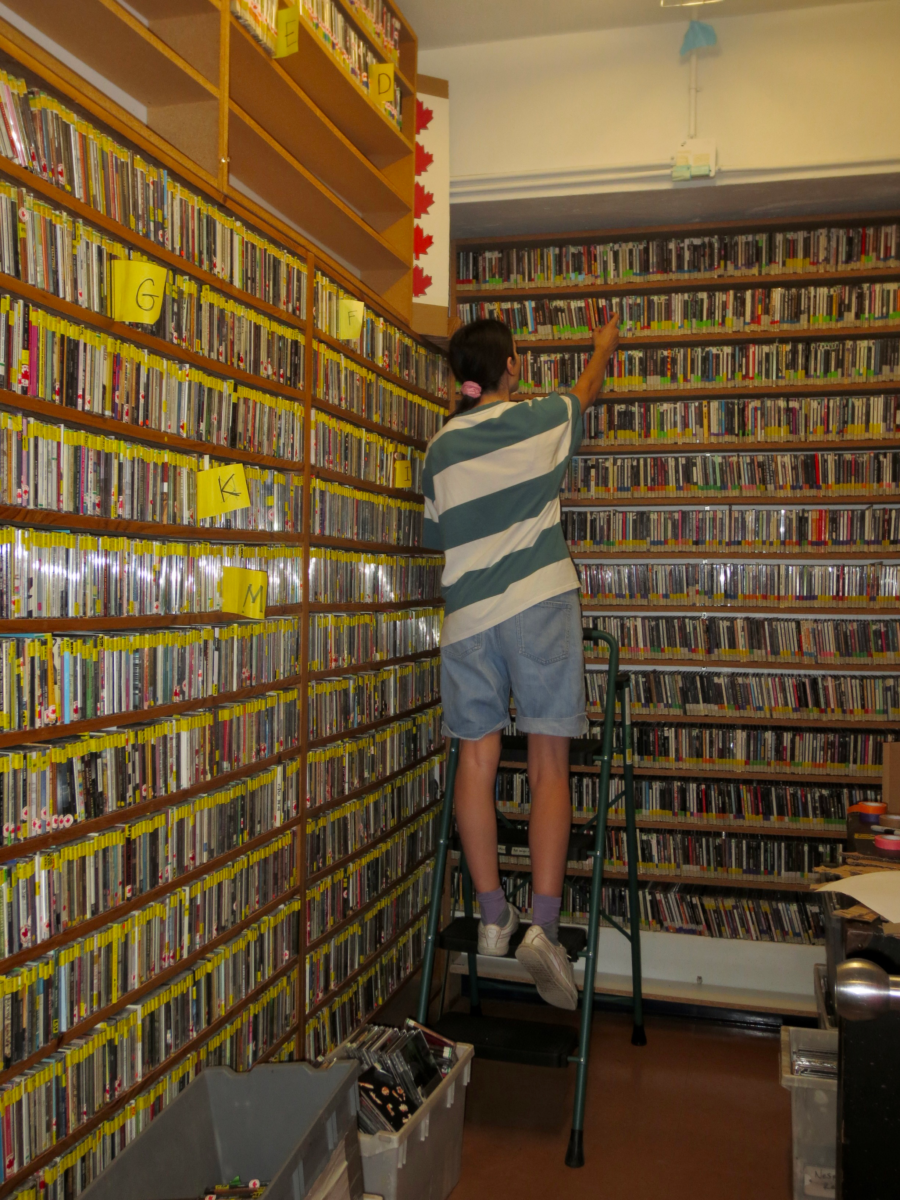A talk with CJLO’s music director about the radio station’s airing process.
As Concordia’s one and only radio station, CJLO 1690 AM’s team needs to stay up to date with the emergence of new music to air while continuously cataloging incoming music. As conveyed on their website, over 80 DJs spin through various music genres and CJLO has been streaming seven days a week from early 2003. Their tower and transmitter can be heard as far as Ottawa and Burlington, Vermont. This means that the station’s crew ought to not only constantly broadcast but also take into account their large number of listeners to successfully run a radio station in 2023.
CJLO’s head music director, Lisa Rupnik, shares a typical day in the life at the station and what the DJs encounter and need to consider when airing music these days. Her job mainly consists of tracking what DJs play on their shows and translating that information into their weekly music charts. In her day to day, she is also in correspondence with record label representatives and radio promoters who keep her up to date on all the latest releases. This allows her to ensure their playlists are suitable for listeners and offer novelty.
After receiving recommendations, Rupnik curates what gets added to the station’s digital library based on their DJs’ tastes and interests. After the digital side is taken care of, she explains that the next step is to oversee the physical media collection and coordinate volunteers to help with music library projects.
Rupnik validates that the majority of the DJs at CJLO stream music for their show exclusively. With the decline of tangible music like CDs and vinyls at the station, she says some DJs make an extra effort to play physical media, but it is generally just for fun and doesn’t actually make any noticeable difference to listeners at home.
Their in-house music library holds hundreds of physical media and is part of their permanent collection that has been going strong since CJLO’s start 25 years ago. As music director, Rupnik continues to add physical submissions to their library, which she receives from promoters.
“We value keeping CDs and vinyls to keep a tangible archive of music trends over the years,” Rupnik says. “The fact that CDs and vinyls are rarer these days encourages us to keep and maintain a quality collection.”
As a core member of the CJLO team, Lisa can tell when a release is really exciting, as the singles take the radio by storm long before an actual album is released. For example, the latest Slowdive album, Everything Is Alive, was just released on September 1, but CJLO’s DJs had already been spinning the singles since June.
That being said, a lot of other DJs will play artists on their show whose entire discography consists of singles. These artists are often found on TikTok, YouTube, SoundCloud and even Bandcamp. Rupnik agrees with this support: “It’s great that DJs are supporting these artists as some of them are totally DIY, although you should take into consideration that the “singles only” trend happens amongst both indie and major artists.”
Concordia’s on-campus radio station is then far from vanishing collectible pieces of media but does keep a close eye on taking the extra effort to sustain their library and encouraging DJs in engaging with more tangibility in music.
